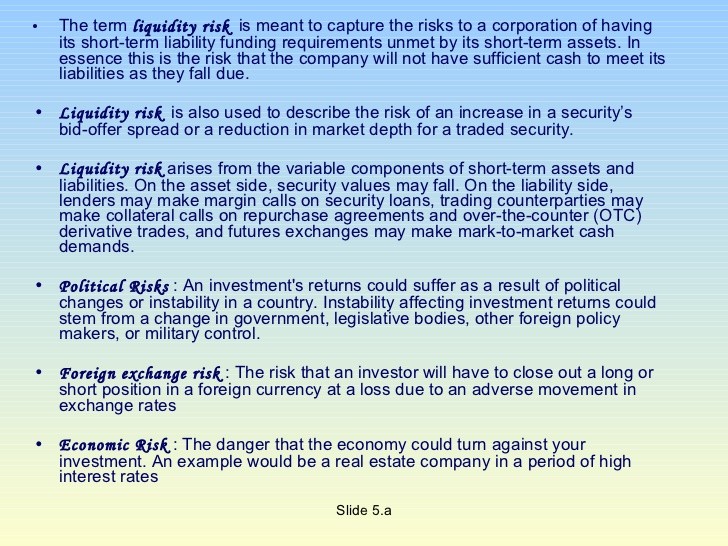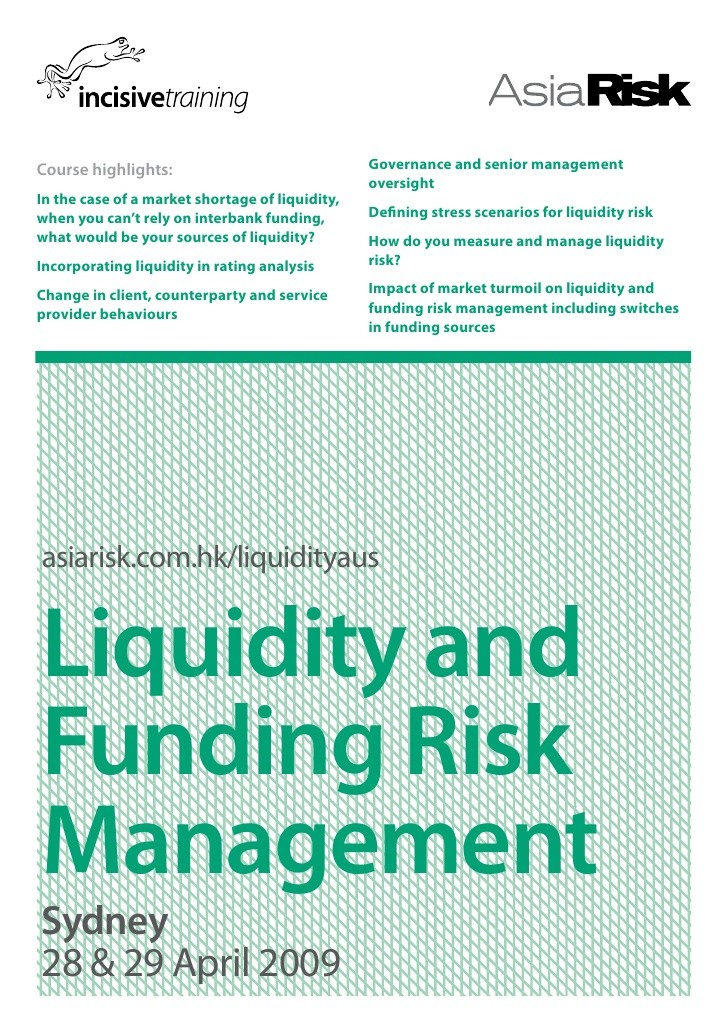A Look at Liquidity Risk Management
Post on: 16 Март, 2015 No Comment

By Jessica Sipprelle,
Thursday, April 18th, 2013
In the wake of the 2008 financial credit crisis, investment firms have recognized the need for more robust liquidity risk management tools and procedures. However, due to shifting regulations and detailed fund and investment structures, fund of funds, private equity firms, hedge funds, and institutional investors continue to grapple with liquidity management and reporting within their investment portfolios. The following is a high level overview of both the liquidity risk challenges facing firms today, and the ways in which some fund managers are overcoming these challenges.
What is liquidity risk, and how does it affect funds?
Liquidity is the extent to which an asset or security can be bought or sold in the market, while not impacting the assets price. The concept of liquidity is comprised of illiquid assets, which are the result of liquidity risk and cannot be instantly sold due to value uncertainty and lack of a market. Liquidity risk refers to the concept that an asset or security cannot be traded at the rate necessary to achieve returns and bypass losses. In the last several years, worldwide economic challenges including rising liquidity costs, a more uncertain market and lower levels of market assurance have contributed to the liquidity management challenges facing funds. Liquidity risks ability to negatively impact and compound other types of risk, such as credit risk, also has far reaching consequences for the financial markets. These consequences make it even more imperative for firms to get a handle on their liquidity risk management practices.
Hedge funds and fund of funds are directly impacted by liquidity risk. Hedge funds undergo both position and fund liquidity. Position liquidity refers to how quickly the instruments employed in the strategy can be converted to cash at a known value. On the other hand, fund liquidity refers to how fast the stated terms will allow an investor to exit a fund investment. Fund of funds typically offer superior liquidity in comparison to hedge funds. This is due to their investment strategy, which involves investing in groups of various unregistered hedge funds rather than stocks, bonds or other securities. Other types of fund of funds include private equity fund of funds, mutual fund of funds and investment trust fund of funds.
Data Management Challenges
Data management continues to be a serious challenge for many funds. This is the result of funds limited analytical capabilities and lack of a centralized, systematic approach to examining liquidity risk. Because liquidity has the ability to compound many other types of risk, its important for firms to take a centralized approach to analyzing liquidity. Employing a siloed approach prevents managers from fully understanding their liquidity position on a wider scale.
The lack of efficient data management technologies prohibits firms from accurately predicting cash flows. However, many software solution providers are attacking this challenge head on by offering state-of-the-art financial automation platforms. One such company is our partner, Ledgex Systems. whose Ledgex Platform product suite simplifies the management of these complex requirements. According to the experts at Ledgex, there has been a recent shift in the investor/allocator community that calls for cutting-edge liquidity analysis capabilities. Using this advanced platform is one way that fund of funds are dealing with the stringent requirements.
How are firms dealing with liquidity risk management challenges?

Tools such as the Ledgex Platform are especially helpful when it comes to data management, which is directly linked to a firms liquidity management practices. In order to achieve the highest level of liquidity management efficiency, its vital for data to be collected, analyzed and conveyed at a variety of aggregate levels. Because many funds have not yet undertaken the necessary data management measures, they have incurred heavy and undesirable financial costs in addition to having their liquidity risk management procedures severely stalled. Software tools like Ledgex enable funds to gain a stronger understanding of their internal liquidity management practices and allow them to achieve a higher level of operational efficiency within their technology infrastructure. Specifically, the Ledgex Platform streamlines data management practices across all facets of the firm, clarifying its level of liquidity risk and enabling portfolio management, monitoring, reporting, and risk and compliance tasks to be run more effectively.
Of course, funds must also remained focus on compliance. Many liquidity issues have arisen as a result of poor or non-existent stress testing procedures. In light of the financial crisis that plagued 2008 and the newly imposed regulations which resulted from it, firms are now required to develop appropriate stress management procedures and consistently undergo testing. In addition, regulators are now looking for evidence that management has been deeply involved in the development of the stress testing procedures.
Following are some frequently asked questions regarding the challenging issue of liquidity risk management:
For more information, or to speak with a liquidity management expert, contact an Eze Castle Integration representative, or visit the Ledgex Systems website .
Image credits: Google, Sungard














